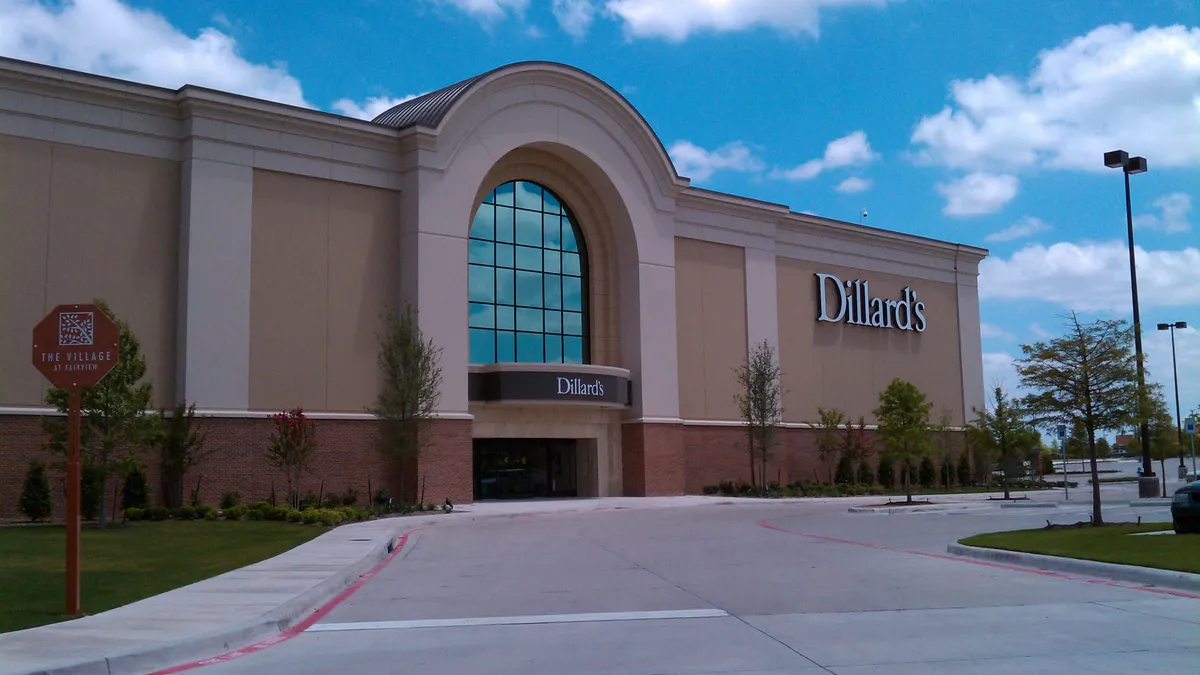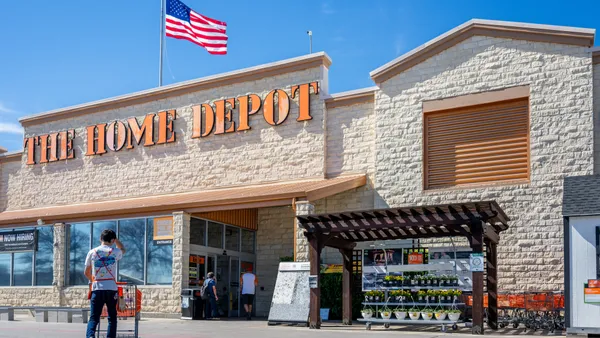Dive Brief:
-
Regional department store Dillard’s on Thursday reported a net second quarter loss of $17.1 million, or 58 cents per share, widened from $12.1 million, or 35 cents per share for the prior-year period, badly missing FactSet analyst estimates cited by MarketWatch for 18 cents per share, in a period hit hard by discounts and rising inventory. Shares fell 12.8% in late trading Thursday following the report.
-
Q2 net sales fell to $1.427 billion from $1.452 billion in the year-ago period, according to a company press release. Total merchandise sales in the quarter fell 1% to $1.385 billion from $1.403 billion a year ago, and same-store sales fell 1% as sales in women’s apparel rose slightly, juniors, children’s, women’s and men’s accessories and men’s apparel remained steady. Sales in women’s footwear were slightly below trend while sales in cosmetics, home and furniture trended down, the company said.
-
The Little Rock, AR-based department store, which expanded in the South, West and Midwest in the 1980s and 90s by buying up other local and regional department stores, is under pressure from hedge fund and activist investor Snow Park Capital Partners to unlock value in the company’s extensive real estate holdings.
Dive Insight:
Dillard’s isn’t the only retailer struggling to find its way in the department store market — similar situations have shown up repeatedly in reports and warnings from analysts. Moody’s Investors Service started off the year noting that the sector would face particular trouble in an otherwise relatively heathy period for retail.
Family-owned Dillard's saving grace is its balance sheet: The company on Thursday also said it netted a profit in the first half of the year that reached $49.2 million, or $1.62 per share, though that’s down 45% from $89.5 million or $2.55 per share in the same period last year.
But with sales dropping and inventory rising, the department store is resorting to discounts, which is wrecking its profits.
"From our recent visits to stores, we still believe that Dillard's has an inventory problem," GlobalData Retail analyst Håkon Helgesen said in a note to emailed to Retail Dive. "Most departments are crammed full of stock and feel oppressive. As much as choice can be a good thing, Dillard's simply has too much of it; the result is that it is exhausting for consumers to sift through all the options available."
With department stores under siege, Dillard’s has to do more, Helgesen says. "Dillard's is still operating a store and range model that worked 30 years ago, but is just no longer as relevant today," he said. "Much of this is down to the company's refusal to do anything particularly innovative and its glacial pace of change. The danger of this strategy of 'bumping along the bottom' is that, over the longer term, it could severely weaken the business. Dillard's low productivity provides it with no cushion against the ongoing challenges in the market and suggests that the future profit trajectory is downward."
The company has more than real estate on its side, though. That old-fashioned department store approach has its upsides, and Dillard’s stores are neat, full of helpful staff and include strong non-apparel departments, he noted. "Dillard's is not a bad retailer. Our impression is that of a company that cares but is unwilling to adapt as circumstances change," Helgesen said.
The pressure to focus on its real estate, rather than evolving its retail strategy, could derail that, Helgesen warned. If executives and the family — which still controls most of the stock — aren’t mindful, other activists could join Snow Park in calling for property-based profit-taking strategy that could siphon time and resources away from a turnaround.
"[R]eal estate could be monetized by breaking it out and cross-charging Dillard’s, but this is robbing Peter to pay Paul and would ultimately spell the end of Dillard's as a retail business," he said. "The bottom line is that Dillard's is a retailer. To survive it needs to act and think like one. And that means evolving to meet the needs of modern consumers and competing effectively in a modern market."















